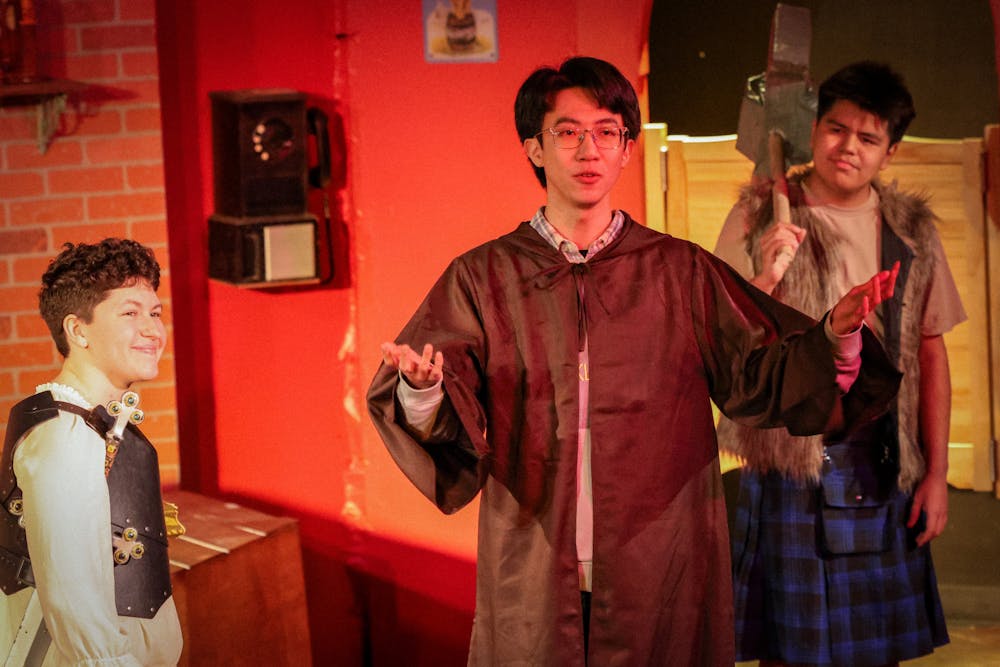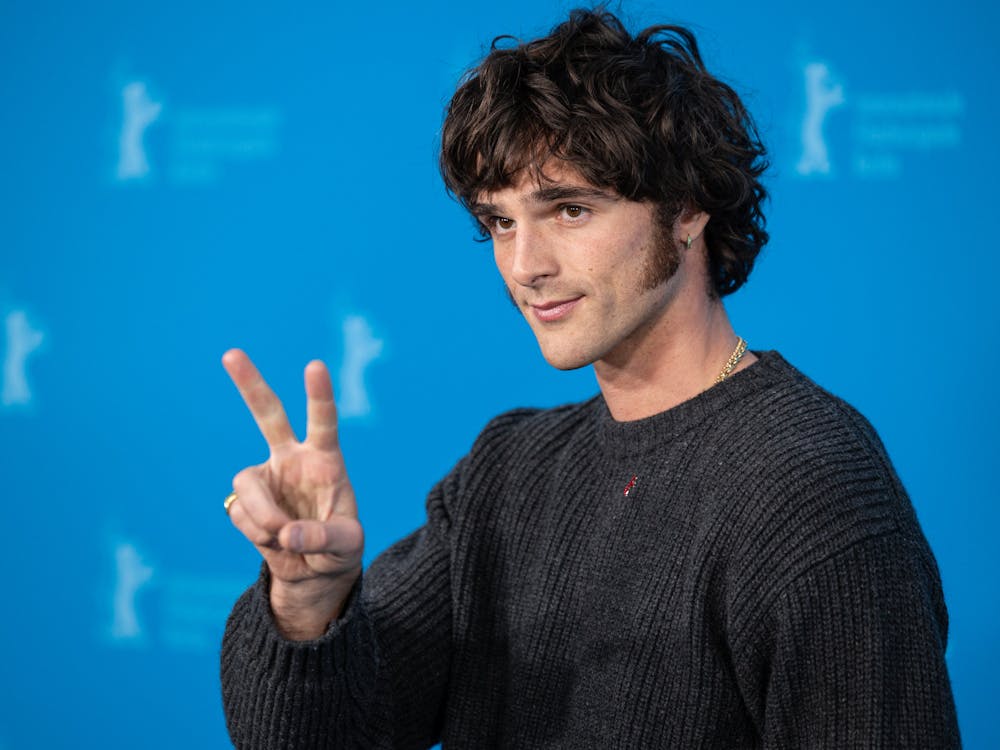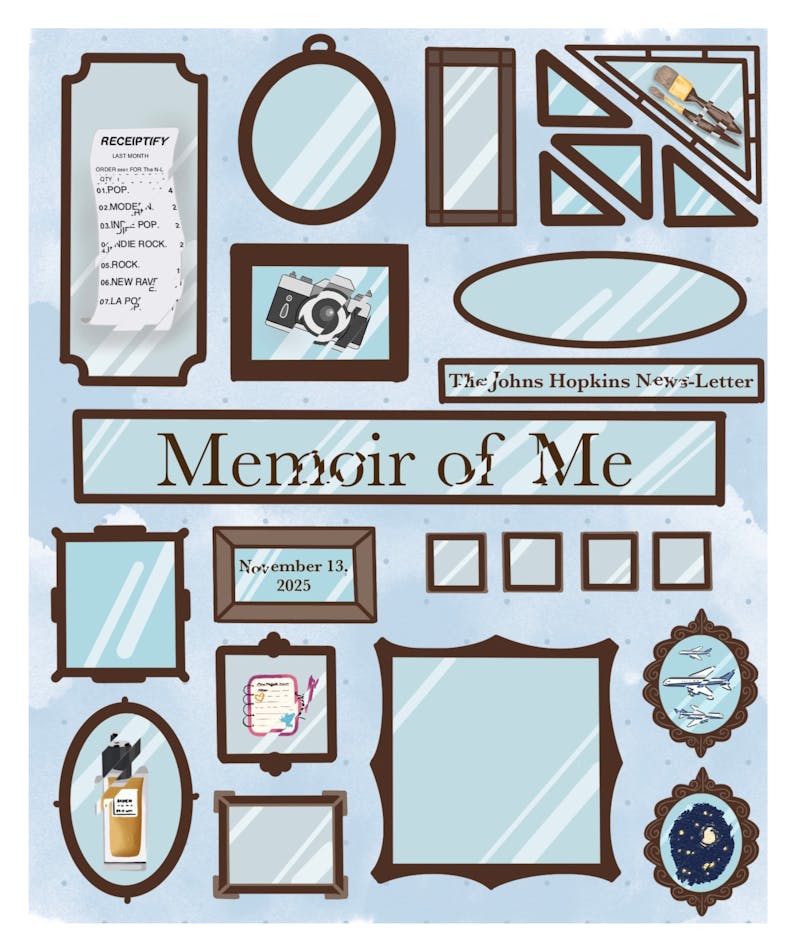This past Friday, I had the chance to attend Witness Theater’s premier of their 2025 I-show — a performed collection of student-written plays — which were then acted and directed by the talented students of Hopkins.
I have attended many of Witness Theater’s performances in the past; some have been better, others slightly lacking in certain areas, but the group has always maintained a level of professionalism that ensures this beacon of opportunity remains a mainstay of the arts community at Hopkins.
In an email to The News-Letter, Executive Producer Madison Epner explained the mission of Witness Theater.
“Witness exists as an outlet for student creativity, especially on a campus known for STEM and in a world that devalues creativity, the arts, and independent thinking. [...] It’s a chance for STEM students to get a break from their course loads and humanities students to supplement the work they do in classes,” she wrote. “In short, Witness is a lot of fun, no matter your interests or goals in theater. Among the other theater groups at Hopkins, Witness is special because of the opportunities for student leadership and chance to learn from other students.”
Everything at Witness, from the writing to the directing, is done by students at Hopkins. For the I-show, the club typically decides on a location to set all the plays in before the script submissions are even opened. This year, that location was a bar, fit with swinging saloon doors, a piano, shelves of liquor bottles and advertisements for Guinness.
There was also a blackboard on the back wall with a mysterious script, which Epner explained was Simlish from the successful electronic arts franchise The Sims, detailing signature cocktails and a wine list. It was a really impressive set, even compared to past Witness productions I had attended.
The first play of the night, The Armor We Wear, written by graduate student Mark Gonzales and directed by senior Gemma Watson, is a Dungeons and Dragons campaign brought to life. The dungeon master (DM) and effective narrator, Qiushi (Chris) Tian whisks through the bar with his dark brown cloak and thick black binder, imitating the bartender’s southern drawl, a wealthy aristocrat’s English tinge and a thief’s ominous grumble. The two player characters — Barbarian (Ryan Garza) and Sir Fig Newton (Finnigan Keane) — follow the DM around the supposedly imagined tavern, sorting through the campaign’s details of the current “largest vegetable” contest and a local music competition.
At a certain point, it becomes clear that what this team needs most is a bard, and everyone turns their attention towards the silent figure standing stage right, up on a platform separated by a banister. Through the dialogue we are made to understand that this character, played by Yona Levine, staring out at the audience with an unchanging expression, is the deceased friend of the other players and DM, stuck in the realm of the campaign with no corporeal agent to bring them back to life. Suddenly, the DM becomes Lucas, the Barbarian becomes Nate, Sir Fig Newton becomes Jack and the lonely figure Bardicus on stage right becomes Miles, their friend who has committed suicide and has brought the campaign to an uncomfortable halt.
Next came Silent Creek, West Virginia, a period piece set during Prohibition-era America, written by Watson and directed by Mariana Ferreira. In it, Hattie Colmstock (Jewels Seeger) is the owner of a tavern in the titular town. One slow day, a man of the prestigious Hawthorne family comes in singing “Oh My Darling, Clementine,” asking for moonshine and information surrounding rumors of a union revolt in the local coal mines. Colmstock is forced to serve the man her illegal stash of alcohol and deflect the entitled man’s accusations toward her own two sons.
Very quickly, Colmstock is unable to hide her contempt, and she unleashes insult after insult at the ignorant oppressor strolling around her establishment. The two get in a yelling match, and Colmstock eventually smashes a bottle against the brick wall to threaten Hawthorne’s life. As she realizes the futility of her threat, she hesitates and rescinds her threat, but the damage is done. Hawthorne lets the woman go, though he lets her know that he could have had her hanged for the threat alone. The play ends with Hawthorne alone at the bar, again singing “Oh My Darling, Clementine” before the stage fades to black, and the recorded version of the song by Freddy Quinn plays.
Following a brief intermission, the next play was Old West Fashioned — written by junior Max Hsu and directed by senior Kate Ketelhohn — a quick comedic play about a bar with a Wild West theme for one night only. Marshall (Camryn Byrum) strolls inside in full cowboy garb, complete with a cowboy hat, colorful cow-print slacks and a fake felt mustache. His wife Grace (Watson) is only along for the ride, the tired bartender (Noni Zhang) is hardly enthused and — when Marshall addresses the only other customer, Richard (Garza), as “Little Dick West” — he’s a bit less inclined to play along. The half-hearted acting by the rest of the group gets to Marshall, who scolds them for their lack of conceit and even threatens violence. It’s then when Grace intervenes, revealing that Marshall is in fact not as hard-nosed as he’s pretending to be. In fact, Marshall is a gentle middle school teacher who has never threatened anybody in his life.
Marshall apologizes and explains himself. Apparently, he had heard a term discussed on one of his favorite podcasts, "nominative determinism,” or, in layman’s terms, the tendency people have towards careers that match their names. The group is baffled by his explanation, but they slowly make connections to their own lives, with people they know. The hired singer (Levine), who is dressed up like Dolly Parton, even realizes that her own maiden name is, in fact, “Singer.” Marshall seems to be the exception that proves the rule. So, the rest of the group finds pity in Marshall’s mad attempt at fulfilling his true potential. The play ends with the other characters attempting to regain their interest in the theme and Marshall having fun, accepting who he truly is.
The final play of the night, Seal Your Fate, written by sophomore Karen Dong and directed by junior Yatzil Guzman with intimacy training by junior Cyrus Levy, had by far the most ambitious timeline. It starts with Ciara (Celina Stodder) entering the bar in early morning, ostensibly coming back for her jacket which she had left the night before. Mor (Zhang), the bartender, questions her intentions coming to a bar so early in the morning, but Ciara is elusive, and she indulges in her inquisitor’s obsessive interest in Norse mythology. Ciara is eventually forced to recount what happened the previous night, and the actors leapt into positions as a reversing tape sound effect came from above.
The next scene commenced under a blue tint to signify it was the past. Ciara enters the bar as before, but, this time, her jacket is nearly stolen by a local pirate and employee of the bar, Dylan (Ketelhohn). According to Dylan, it was all a prank, and she promptly introduces herself to the butt of his joke in the most unserious way possible: “My name is Dylan, my favorite color’s red, I’m about a third of the way through One Piece and I love drinking!”
Oddly enough, the two hit it off, and Ciara confides that her family has a custom, where, if someone steals her jacket, she is forced to marry them. The symbol of the jacket then plays two roles, both as a metaphor for the predatory nature of unwanted courtship and Dylan’s respect for Ciara (as she refuses multiple attempts to steal the jacket herself).
When we flash forward to the time of the first scene, Dylan comes to prepare the bar for customers, and Ciara thanks her for returning her jacket. But, as Dylan slowly reveals the true lore behind Ciara’s jacket, Mor is reminded of a creature of Norse mythology: the selkie. Selkies are aquatic humanoid creatures who have a detachable, seal-like coat. If one steals their coat on land, then the selkie is forced to live on land forever. Dylan and Mor grill Ciara on this, suspecting that she is a selkie, and Ciara finally admits to it. Although Dylan and Ciara clearly have an electric connection, the play ends with Dylan refusing Ciara’s jacket again, but only so that they can get to know each other more.
The four plays shown at this year’s Witness Theater I-show were unique, creatively engineered and professionally produced. For a group that is entirely run by students, Witness Theater continues to maintain a level of professionalism equalling if not surpassing many college theater companies around the country. Shows like this, engaging in complete production from script to production are an invaluable asset, and the stories continue to impress me year to year.
Editor’s Note, 2025: A previous version of the article misspelled Qiushi (Chris) Tian name and used incorrect pronouns for Dylan. The News-Letter regrets these errors.





